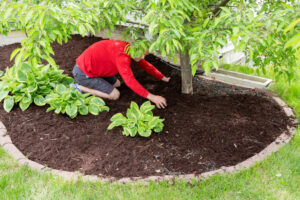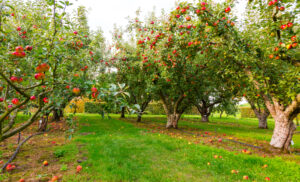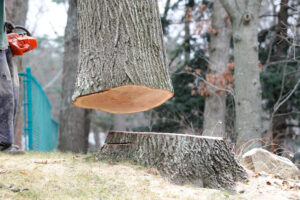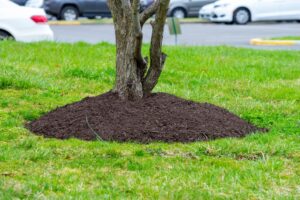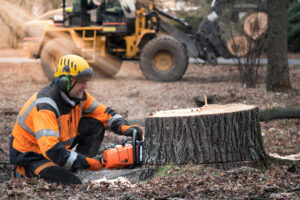Warning Signs Of a Dying Tree
Trees are an important part of our planet and can provide many benefits, such as shade, oxygen, and beauty. Unfortunately, even the hardiest trees can become sick or die due to disease, pests, or harsh weather conditions. Knowing how to spot the early warning signs of a dying tree is an essential skill for any homeowner or gardener. It allows you to identify problems before they become too serious, or sometimes prevent them entirely.
This blog post will look at the key signs that your tree may be in trouble and explain what you should do for each one. With this knowledge, you can protect your home and landscape from the environmental threats of ailing trees.
Gaps Appear at the Base of the Tree
If you notice gaps at the base of your tree, it could signify that the roots are dying. Root rot is a common cause of this and can be caused by several factors. Some examples include:
- The soil around the tree is too wet or dry.
- A lack of drainage to keep it from getting too moist
- Excessively tight soil below your tree prevents good air circulation.
Shedding Leaves
Leaves are a tree’s primary means of photosynthesis, used to produce fruit and leaves. If your tree loses its leaves, it could be due to drought, nutrient deficiencies, or disease. However, leaf loss can also signify that something else is happening under the surface—like stress from pests or disease.
Pests like ants will attack your trees when they feel threatened by them (this is why we have lawn pesticides). When this repeatedly happens over time, it can weaken the plant’s immune system so much that it no longer has enough strength left in its branches to fend off other pests like beetles or mites that feed on sapwood inside living trees.
Wilted Leaves
If you notice wilted leaves, it could mean that your tree is experiencing drought stress. Trees use water to make food and grow branches; when they don’t have enough to drink, they can’t survive. The best way to help your tree recover from a dry spell is by checking its soil for moisture levels and then watering it every week or two until the leaves re-establish their green coloration.
The Tree is Lying Down
If your tree is lying down, it’s likely due to a variety of factors. For example, you may have planted too shallowly or too deep, which can cause roots to grow at an angle from the trunk and eventually lead to toppling over. Sometimes trees simply get old and need more maintenance than they were given when they were planted. Whatever the reason for its decline, you should take action right away:
- Call a professional arborist who will be able to diagnose what happened and give advice on how best to prevent further damage from occurring in future seasons.
- A typical treatment plan includes removing dead branches and pruning back branches that have grown too far away from their roots (this may require removal). The arborist will also check for pests like scale insects that could be causing problems inside your home as well as outside!
The Bark of the Tree is Flaking Off
If you see your tree’s bark peeling, it could be a sign of disease or insect infestation. The outer layer of the bark is called the cambium and contains living cells that produce new tissue inside the tree. When this layer dies and becomes dry, it flakes away from your tree.
If you notice that more than just a small area on your tree’s trunk has begun to peel away—or if tiny pieces of bark are falling off all over—you should seek professional help immediately by calling an arborist. They’ll be able to diagnose the problem and recommend treatment options.
The Tree Looks Deformed
If your tree has a twisted or bent trunk, that’s a sign of dying. In fact, if the tree appears to be leaning over in any way, it could be dying.
You may also notice that your tree’s branches are bent or broken off at their base—this is another sign that something is wrong with its health and well-being.
Your arborist may recommend removing the entire tree if it is beyond salvation. However, if the tree can be saved, they will likely suggest treatments such as pruning and fertilization to encourage better growth.
In any case, seeking professional help from an arborist as soon as you notice declining health in your tree is the best way to ensure its survival. With proper care and maintenance, your tree can be restored to its former glory!
Leaning Trees Require Special Attention
If you see a tree leaning, it’s important to get the attention of a professional. Trees can lean for many reasons, but some are more serious than others.
- A tree that leans toward a building or another tree could damage them if they hit each other with their branches.
- A tree that leans toward power lines could cause an electrical shock or fire hazard in your home or business if there is any contact between them (such as when someone walks underneath).
- A road can also be at risk of damage from trees that are leaning against it—especially if those trees have roots growing into asphalt pavement!
The Crown of Your Tree Is Sparse or Thinning
Sparse or thinning crowns are a sign of an underlying issue with your tree. While pests like spider mites, beetles, and hoppers can cause it, other weather-related issues, such as too much or too little water, could also be to blame.
Trees that have dry spots near their crown may not be getting enough moisture, and if you notice dead branches on either side, this could mean the roots are being damaged by fungus.
It’s essential to identify the exact cause of a sparse or thinning crown so that you determine the necessary action to prevent further harm and give your tree the care it needs to remain healthy.
You Find Broken Branches on the Ground Below Your Tree
If you find broken branches on the ground below your tree, it’s likely due to a storm or other weather event. The tree may have been damaged by wind and lightning, but it also could have been struck by falling branches from neighboring trees.
If you see signs of injury in your trees, such as broken limbs or dieback, take precautions before attempting to remove them:
- Clear the area around your tree of any debris and assess the situation.
- If you suspect lightning damage, call an arborist right away.
- Look for signs of decay in the broken branches, as this could indicate infection.
- Prune dead or diseased wood away from healthy wood to prevent the spread of decay.
- Call a Professional tree service provider to remove large or difficult branches.
If you see any of these signs in your garden, don’t ignore them! They could be indicators that something is wrong with your plant, and if left untreated, it could die within months (or even weeks).
Are you worried about a tree in your garden? Tri-Cities Tree Guy is here to help! With years of experience in arboriculture, we provide top-notch professional tree services for all your tree care needs.
Contact us today for a free consultation! We look forward to helping you keep your trees healthy and beautiful!

